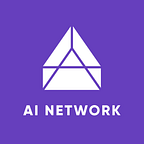Web3: NFTs — Authenticate the World #2
Have Revenue models changed from the Web2 era to the NFT era?
We’ll start with a graph drawn by Chris Dixon, partner at a16z, eminent Web3 VC firm.
The images above may seem like simple demand curves, but they actually represent an important characteristic that distinguishes Web2 from Web3. From left to right, they explain the revenue generation models of Web2, Fungible Tokens, and Non-Fungible Tokens.
In the Web2 era companies generated revenue through advertising. In this era, where many users were unwilling to pay fees in exchange for service usage, the fees that could be charged to a single user were minimal. Therefore, to monetize, companies had to gather a large number of users, often in the millions or tens of millions. It was almost inevitable to fall into the fixed idea that “you can’t turn a profit unless you create something that people use every day.” To overcome this limitation, the subscription model emerged. Some applications in Web2 began to charge monthly subscription fees to certain groups of users, representing a shift towards the subscription model.
In the NFT era, where time prediction becomes possible, price determination is also “bidirectional”
In the past, the reason we couldn’t have tiered pricing and multiple pricing plans like the last picture, was generally because consumers found it too difficult or too much work to choose between them. Essentially it was due to the limits of human attention spans, willingness of effort to be given, or even cognitive ability. In other words, if it aligns with these three things, then it’s possible to have multiple pricing plans.
As we saw in a previous article, with the advent of Web3, time has emerged on the internet, and now it’s possible to divide pricing plans. A perfect example to illustrate this is booking airline tickets. Airlines offer cheaper fares several months before flights to secure users in advance, and as the flight approaches fares become more expensive as demand rises and the flight deadline approaches. Web3 has empowered such choices with cognitive ability. As a result, it has made it possible to choose and assess value differently based on time. This is the allure of NFTs and Web3. The ability to predict time and maximize value at the most appropriate moment are strong factors in what defines success, in many of its variants. If everything in this world has value and is just a matter of time, it inevitably leads to the issue of record-keeping. This is precisely why blockchain technology has emerged. Now, we are transitioning from an era where value was fixed to an era where value can change, and this era is the current trend towards Web3.
In the Web2 world and before, price determination was conducted in a top-down manner. In the coming Web3 world, we’ll shift from unilateral to bilateral pricing. Until now, as platforms determined prices, subscribers only had the right of refusal when it came to payment. However, just looking at Opensea, the largest marketplace for NFTs, we can see how things can be different in the Web3 world. The concept of offer has far more prevalence in Web3 than it did in Web2, and the issue of pricing has become a bi-directional communication. Now, the value of an item is not determined by just one person alone and can have many users assign different values and influence prices. NFTs serve these bi-directional ends.
In summary, the value of Web3 comes from solving the bootstrap problem.
1000 true fans
In this context, it is important to remember the saying, “Web3 is successful if 1000 true fans can pay about $100.” We’re now in an era where a business model can succeed without targeting millions or tens of millions of users. As we mentioned earlier, in the era of non-fungible tokens there will undoubtedly be an enormous number of NFTs in the world. With such vast data, the integration of artificial intelligence is inevitable. Artificial intelligence is already delving deep and has identified sufficient benchmarks for delivering high-quality content and information. Thus, with the help of artificial intelligence, deep exploration of our preferences is already possible. Now, we have entered an era where value creation through this exploration is also possible. In the next article, we’ll further elaborate on how we are all already moving towards the era of NFTs with the power of artificial intelligence.
In the Web3 era, a fan becomes not just one among many subscribers, but a unique collector. A representative example of this shift can be seen in the case of “Subscribe to Mint” by mirror.xyz. In the era of minting subscription rights, the significance lies in the fact that as much as creators have subscribers, it is equally important how each subscriber collects content. Now, the structure where creators publish to fans, known as the creator feed, is disappearing, and the content the individual subscribes to becomes ‘my collection list’. It is now possible to freely share and assign value to the collections individuals have gathered. Even with just 1000 true fans, a business can thrive in the Web3 world. We are entering an era where my NFT represents ‘my value’, even if nobody knows who ‘I’ am. In conclusion, NFTs serve as a means to strengthen individual sovereignty and personal preferences.
AI Network is a decentralized AI development ecosystem based on blockchain technology. Within its ecosystem, resource providers can earn AIN tokens for their GPUs, developers can gain access to GPUs for open source AI programs, and creators can transform their AI creations into AINFTs. The ultimate goal of AI Network is to bring AI to Web3, where everyone can easily develop and utilize artificial intelligence.
If you want to know more about us,
- Homepage: https://www.ainetwork.ai/
- AI Network DAO Discord: https://discord.com/invite/aindao/
- AI Network YouTube: https://www.youtube.com/@ainetwork_ai/
- AI Network Facebook: https://www.facebook.com/ainetworkofficial
- AI Network Twitter: https://twitter.com/ainetwork_ai
